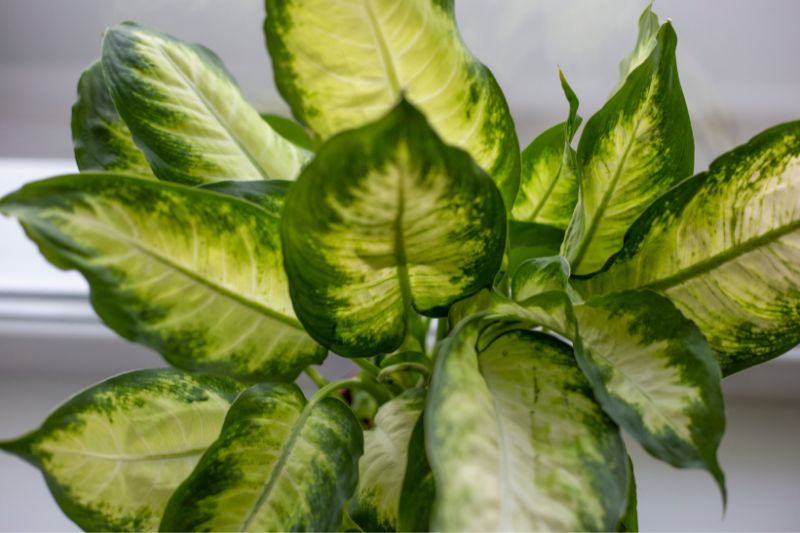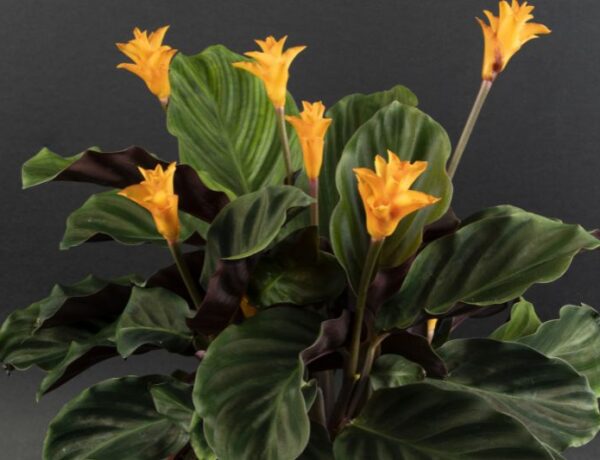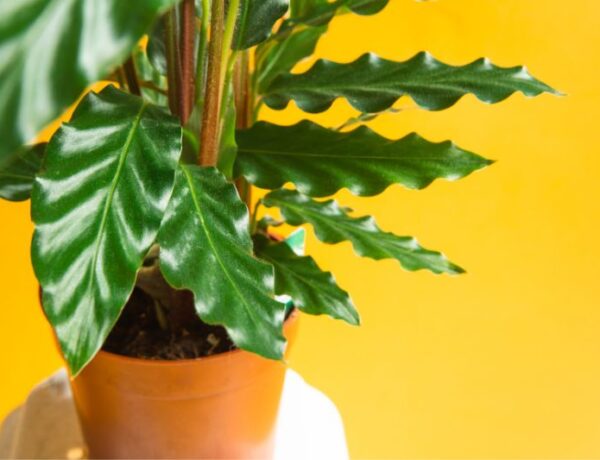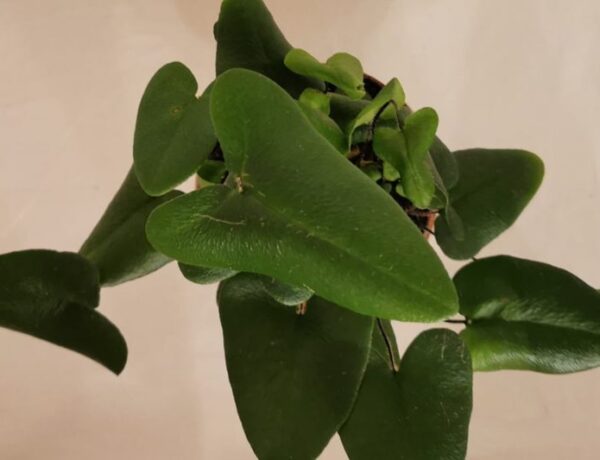Today’s article is about Dumb Cane, or Dieffenbachia as the scientists like to call it. This beauty is not just easy on the eyes with its lovely leaves, but it’s also pretty chill when it comes to care requirements. That makes it a win-win for both newbie plant parents and seasoned green thumbs!
But wait, there’s a twist! While this plant is a feast for the eyes, it’s not so friendly if ingested. The name “Dumb Cane” actually comes from the fact that the plant’s sap contains calcium oxalate crystals, which if chewed or ingested, they cause a burning sensation and may even lead to temporary speechlessness or “dumbness”.
However, if you’ve just added it to your collection, we’ll walk you through everything you need to know to keep your Dieffenbachia healthy and thriving.
Table of Contents
1. General Information & Taxonomy
| Scientific name: | Dieffenbachia |
| Common names: | Dumb Cane, Leopard Lily |
| Native to: | Tropical Americas |
| Toxicity: | Toxic to pets and humans |
| Mature size: | 3-6 feet |
| Category: | Tropical houseplant |
| Growth Rate: | Moderate to Fast |
| Hardiness: | USDA zones 10-11 |

2. Dumb Cane Care & Growing Requirements
» Watering
Dumb Cane prefers its soil to be kept evenly moist but not waterlogged. Overwatering can lead to root rot, a common issue with this plant. The best practice is to water the plant when the top inch of the soil is dry to the touch.
» Light
This plant is quite flexible when it comes to light conditions. It can tolerate low light but thrives best in indirect, bright light. However, direct sunlight can scorch its leaves, so make sure to place it in a location where it can receive filtered light.
» Soil
Well-draining soil is crucial for the healthy growth of Dumb Cane. A mix of potting soil, perlite, and a bit of sand is usually effective. You can also use a commercial mix designed for tropical houseplants.
» Temperature
Dumb Cane prefers a warm environment and does best when temperatures are between 65–75°F (18–24°C). Extreme cold or sudden temperature changes can stress the plant.
» Humidity
This plant thrives in a humid environment, which mimics its tropical native habitat. Aim for a humidity level of at least 60%. You can use a humidity tray or room humidifier to maintain these levels.
» Fertilizer
Feed your Dumb Cane every 4-6 weeks during the growing season with a balanced, water-soluble fertilizer. Avoid fertilizing in the winter months when the plant’s growth slows down.
3. Dumb Cane Maintenance and Propagation
» Repotting
Repotting should be done every 1-2 years or when the plant becomes root-bound. Choose a pot that is 1-2 inches larger than the current one and ensure it has good drainage.
» Pruning
Pruning is generally not necessary for Dumb Cane, but you can remove any yellow or damaged leaves and faded flowers to encourage new growth.
» Propagation
Dumb Cane can be propagated through stem cuttings. Cut a 4-6 inch section of a healthy stem and plant it in moist soil. Make sure to wear gloves while handling the plant to avoid skin irritation from its sap.
4. Common Issues
» Leaves Turning Yellow
Overwatering is usually the culprit when you see yellow leaves. Reduce your watering frequency and check for root rot.
» Leaves Turning Brown
Brown leaves often indicate that the plant is getting too much direct sunlight or the air is too dry. Relocate the plant and consider increasing humidity.
5. Dumb Cane Diseases & Pests
Dumb Cane is generally resistant to most pests and diseases, but it can sometimes be attacked by spider mites or mealybugs. Use insecticidal soap or neem oil as a preventive measure. Root rot can occur due to overwatering, so make sure to keep the soil conditions optimal.
Conclusion
Dieffenbachia is an attractive and relatively easy-to-care-for houseplant that can bring a tropical vibe to any interior space. By following these care guidelines, you can enjoy a healthy, thriving plant for many years. Always remember to handle it carefully due to its toxic sap and keep it out of reach from pets and children.






No Comments